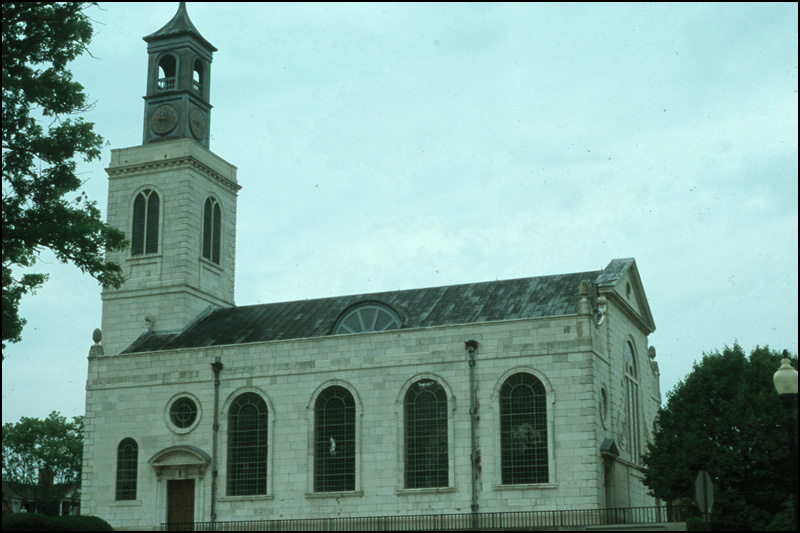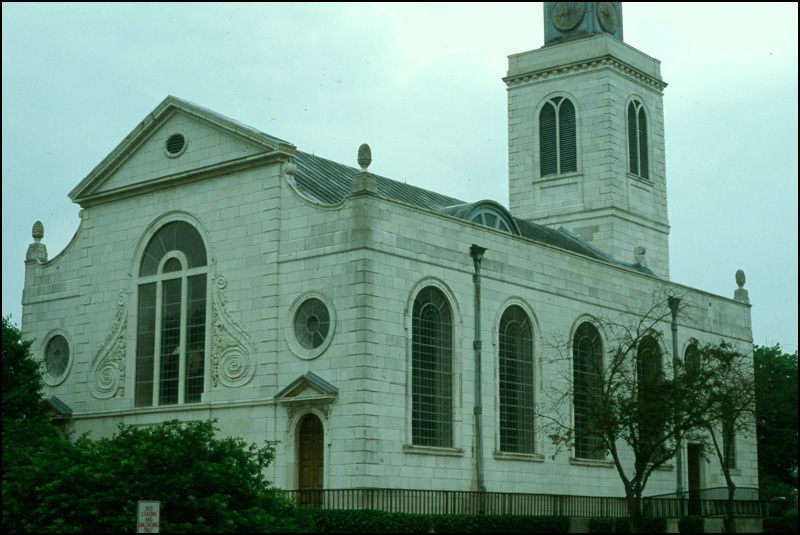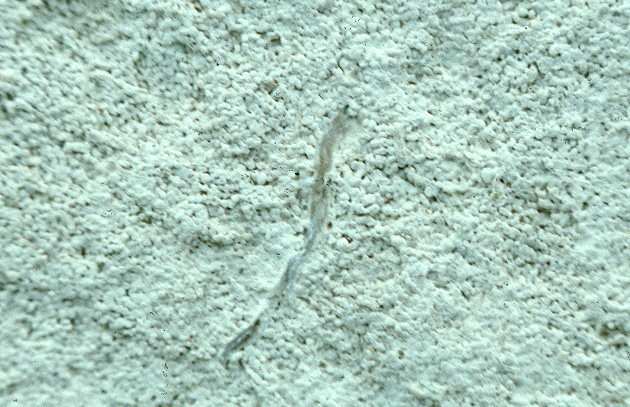

The explanation for these perplexing statements is that we're looking at the Church of St. Mary, Aldermanbury, which was built in London in the 1670s after the Great Fire of 1666, gutted by fire in the Blitzkrieg bombing in 1940, and moved piece by piece to Fulton, Missouri, in the 1960s. The church is on the grounds of Westminster College, where Winston Churchill gave his famous "Iron Curtain" speech in 1946. The church thus continues the college's ties to Britain, and an extensive museum about Churchill is housed below the church.
The church was built of Jurassic oolitic limestone. Much of the stone is covered to provide a smooth surface, as seen at the right of the next image below, but the rock's texture is visible where the surface has fallen away. The bottom image shows that the rock is an oolitic limestone - it consists of ooids (small spherical concretions of CaCO3 that formed on the seafloor), with a few fossil mollusc shells too. This limestone formed in the Jurassic period, about 200 million years ago. Thus the 40 years since the church was transported across the Atlantic and the 350 since it was built are incomprehensibly dwarfed by the 200,000,000 years since these ooids and shells rolled about on the Jurassic seafloor of a then-newly-opened Atlantic Ocean.

